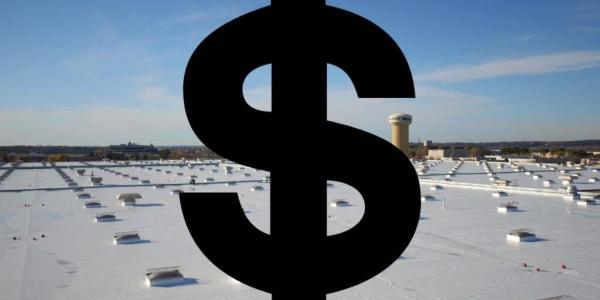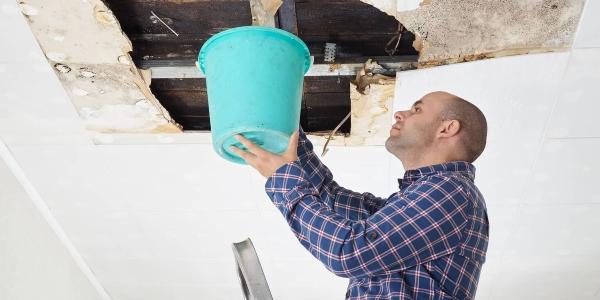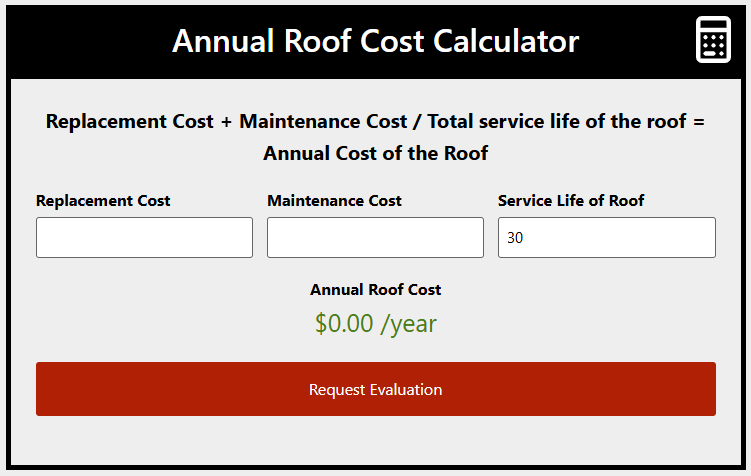A roofing reality check

By Tim Fowler, Sentry Roofing.
Uncover the hidden costs of roof ownership and learn how to save big in the long run.
Considering a roof needs to be replaced every decade or two, it’s easy for building owners to push this expense to the back burner until it's unavoidable. When that time comes, the instinct is to choose the most affordable option with the longest lifespan. But is this the real cost of owning a roof? To truly understand, we at Sentry Roofing dive deeper into the ongoing and hidden expenses that come with roof ownership, beyond just the replacement price.
Calculating annual costs
Now let’s apply everyone’s favorite subject from school to the problem. The math on this is simple though.
there are a number of questions that should be asked when considering replacing or extending the life of a roof through repairs.
-
How long will the new roof last before needing replaced again? Or the roof’s service life.
-
How long will the roof last before need repair or service?
-
Are there regular maintenance costs?
-
What costs are covered under the manufacturer’s warranty? (Always get a manufacturer’s warranty!) Is the warranty prorated? Does it cover labor? Is it a ‘no dollar limit’ warranty?
-
Is the roof energy efficient? Energy savings can go a long way in offsetting the cost of a roof.
We are going to break the costs down into two different categories, expected costs and unexpected costs.
Expected costs of owning a roof
First let’s look at the expected costs of owning a roof, and what you should always plan for.
Replacement costs
The replacement cost of the roof is the easiest and of these because it’s the number on the contract. This can vary wildly from roof to roof from $3 per square foot to $40 dollars and up. The average is closer to $6-$15 per square foot for most commercial roofs. Take the contract amount and divide it by the expected life of the roof and there you go!
Please keep in mind that most roofs will outlive the warranty period by a number of years with some basic maintenance. Using the warranty period as the service life of a roof is not usually accurate and it’s always good to talk to your contractor about their experience with how long their product lasts before needing replaced.
Maintenance costs
Maintenance costs are not as straight forward and varies greatly by roofing type. Many roofs, such as TPO or PVC membranes require virtually no maintenance to keep the roof in good shape. On the other side of this spray foam roofs have to be recoated about every 5 years.
Caulking on curbs and some flashing materials can break down faster than the roof and may need to be replaced occasionally. All of these maintenance costs add up and some warranties require that the owner address these issues to keep the warranty in effect.
Energy costs
Energy costs are often overlooked when it comes to making decisions about a new roof. Adding additional insulation to the roof assembly during roofing can be a huge money saver to offset the cost of the roof.
If a roof is torn off and replaced without adequate insulation, it can also add cost to the owner that will add up to a lot after a couple of decades. Buildings that are located in areas with hot summers will also benefit from reflective roofs that lower cooling costs. Make sure you ask contractors if their solution will affect your utility bill.
Unexpected costs of owning a roof
Now let’s take a look at some unexpected costs of owning a roof.
Leaks and water damage

The first and most obvious of these is leaks. Water leaks can cause physical damage to a building and its contents. These costs will often far exceed the cost of repairing the leak itself. There are other costs associated with leaks that aren’t as easy to see though.
Employees who have to do their job at a leaky workstation will often be frustrated and suffer from morale issues. Maintenance staff who are cleaning up after leaks are not using their time for other tasks. Leaks can also cause safety hazards such as slippery floors.
When considering extending the life of a roof through repairs or going for the low-cost option on replacement, it is important to consider what effect leaks will have on your business operations inside.
Problems from storm damage
Storm damage is another unexpected cost that can be associated with a roofing decision. While you can’t control the weather, you can do something to mitigate this risk. Talk to the contractor about how the roof is being attached to the building. Is it adhered or mechanically fastened? Are they using a manufacturer approved fastening pattern for the screws?
Many roofing manufacturers offer high wind or hail warranties as an option to the standard warranty. Another thing that can be done is to make sure that your insurance policy covers roof replacement costs on your roof. Many policies only cover depreciated value on a roof and can leave much of the cost for the building owner.
Contractor workmanship issues
Contractor workmanship issues are one of the largest unexpected costs that I never expected when I started as roofing professional.
I have lost track of the number of times we have been asked to come out to repair a roof to find out that it is only a couple of years old. Many of these roofs have leaked since they were installed and either never got a warranty or were warranted by the contractor who is now out of business.
No matter how great the product is, a bad installation will be a problem. Make sure that your contractor is experienced and has good references. The roofing professionals who put on your roof will make the difference in how that roof performs.
Add up all of the costs when making a roofing decision. Many times, the best deal turns out to be the most expensive option when looking at the roof from an annual cost basis.
Original article source: Sentry Roofing









Comments
Leave a Reply
Have an account? Login to leave a comment!
Sign In